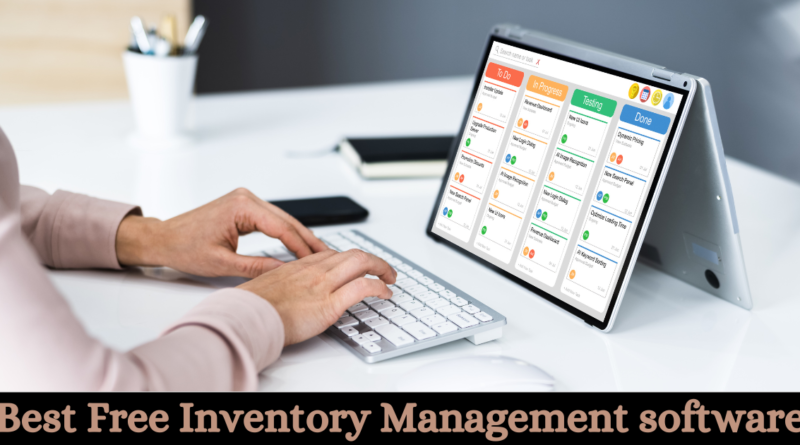What Is The Best Free Inventory Management Software
Introduction to inventory management software
Inventory management is integral to running a successful business, keeping track of stock levels, sales orders, and orders to ensure smooth operations and customer satisfaction. Businesses once relied on manual methods like spreadsheets to keep an inventory under control; with technological advances, however, inventory management software has emerged as a game-changer – this article explores its various forms before exploring which ones offer free options available today.
Why businesses need inventory management software
Efficient inventory management is key for businesses of all sizes. It enables companies to maximize stock levels without overstocking or understocking, reduce costs, and avoid stockouts or excess inventory that leads to inaccurate data – potentially leading to lost sales, dissatisfied customers, and financial losses. Without proper inventory management, businesses could face stockouts, excess inventory, or inaccurate data issues that lead to lost sales, dissatisfied customers, and financial losses.
Inventory management software simplifies operations by automating order tracking, stock monitoring, reporting, and real-time data gathering – providing businesses with real-time insight to make informed decisions quickly and respond swiftly to changes in demand. Inventory management solutions integrate easily with accounting and e-commerce platforms for seamless operations.
TYPES OF INVENTORY MANAGEMENT SOFTWARE
- On-premise inventory management systems
On-premise inventory management systems are installed directly on a company’s servers and computers, offering more control and customization as businesses have direct access to the software. Unfortunately, on-premise systems require upfront costs for licenses and maintenance/upgrade fees for proper functioning and updates to remain active.
- Software-as-a-service (SaaS) inventory management systems
SaaS inventory management solutions are cloud-based systems accessed via a web browser. They offer flexibility and scalability for businesses as they can subscribe to only those required services, with adjustments as their needs shift. SaaS systems take care of their maintenance updates – eliminating in-house IT resources but relying heavily on provider servers and internet connectivity.
- Cloud-hosted inventory management systems
Cloud-hosted inventory management systems combine elements of both on-premise and SaaS solutions. Software is installed on company servers while data is stored remotely in the cloud. This setup gives users control over both solutions while offering ease of accessing them remotely. Cloud-hosted systems require reliable internet connections to access their data remotely.
Benefits of using free inventory management software
Free inventory management software offers many advantages to businesses operating with limited budgets. Here are a few benefits:
Cost Savings
A key advantage of free inventory management software is cost savings. Instead of investing in costly licenses, businesses can utilize free options without compromising functionality – freeing up resources for other aspects of operations.
Scalability
Many free inventory management software options are scalable, meaning they can grow with your business as it expands. As your inventory and operations grow, seamlessly upgrade to paid versions or add premium features as necessary – this scalability ensures your inventory management system stays aligned with business requirements.
Ease of use
Free inventory management software is often designed with user-friendliness in mind, with intuitive interfaces and simple features to simplify inventory management, even for users with limited technical expertise. Businesses can rapidly deploy this type of solution.
Factors to consider when choosing free inventory management software
While free inventory management software provides many advantages, it’s essential to consider certain criteria before deciding. Doing so will enable you to select the ideal free inventory management system for your business needs:
Functionality
Carefully consider each software’s features to determine whether they meet your inventory management requirements. Seek essential functions, like inventory tracking, order management, reporting capabilities, and integration abilities that ensure it can meet current and future demands for inventory management software solutions.
Scalability
Before choosing any software solution for your business, assess its scalability. Look for options that allow you to upgrade or add features as your inventory and operations grow – this flexibility can avoid switching entirely in the future.
Support and resources
Check if the free inventory management software provider offers adequate customer support and resources, such as tutorials, user guides, and online communities that may offer extra help and insight.
Top free inventory management software options
Regarding free inventory management software, several options stand out regarding features and user satisfaction. Here are some of the top choices:
1. ABC Inventory
ABC Inventory is an all-inclusive inventory management software with robust stock tracking, order management, reporting, and customization features to meet individual business requirements and user-friendliness. Their outstanding customer support makes their system even more accessible for businesses.
2. inFlow Inventory
inFlow Inventory is another popular free inventory management software option suitable for businesses of all sizes. Features like inventory tracking, order management, reporting, and multiple location support make it ideal for retail environments.
3. Zoho Inventory
Zoho Inventory is a cloud-based inventory management solution with an attractive free plan with limited features, offering essential functionalities like inventory tracking, order management, and integration capabilities. Furthermore, its user-friendly interface and reliable customer support make this software invaluable.
Features to look for in free inventory management software
While free inventory management software varies greatly in its features and functionalities, here are a few key functionalities you should take note of when searching for free inventory management software:
Inventory Tracking
Inventory management software should provide real-time visibility of stock levels to track inventory accurately. Look out for features such as barcode scanning, batch tracking, and stock alerts, which help prevent stockouts or overstocking of supplies.
Order management
Order management is key for businesses. Your software should enable you to efficiently process orders, generate invoices, and manage customer data seamlessly – look out for features such as order tracking, automated notifications, and integration with shipping carriers.
Reporting and analytics
Attributes that drive decision-making are integral in inventory management software. Your solution should provide robust reporting and analytics features so that you can gather insights and make educated choices – including sales reports, inventory turnover analysis capabilities, and forecasting features.
How to implement and integrate free inventory management software into your business
Implementing and integrating free inventory management software requires careful planning and execution. Follow these steps for a successful transition:
Assess your current inventory management process.
Before investing in new inventory management software, inventory your current process. Recognize any pain points, inefficiencies, or areas for improvement that need improvement – this assessment will allow you to identify what features and functionalities your ideal software must possess.
Choose the right software.
Once your analysis is complete, select a management software that meets your business requirements regarding functionality, scalability, and support. Test out a portion of your inventory to ensure compatibility and ease of use before finalizing your choice.
Train Your Team
Please make sure all team members who will use the software receive extensive training on its use. Ensure they know how to navigate it, complete key tasks efficiently, and take full advantage of its features – this will reduce resistance to change while optimizing benefits from inventory management software.
Best practices for using free inventory management software effectively
Make the most out of your management software by following these best practices:
Regularly update and reconcile inventory data.
Retaining accurate and up-to-date inventory data is essential to effective inventory management. Update your software with any new stock information, sales information, or returns data, then reconcile this data to detect discrepancies quickly so corrective action can be taken promptly.
Optimize Stock Levels
Leverage the software’s reporting and analytics features to achieve optimal stock levels. Analyze sales trends, demand patterns, and lead times to determine ideal levels for each product – finding balance will reduce stockouts or excess inventory.
Integrate with other business systems.
Utilize the integration features of inventory management software to streamline operations further. Integrate it with accounting programs, e-commerce platforms, and other relevant systems to ensure data consistency while eliminating manual data entry.
Conclusion
Effective inventory management is vital to businesses looking to streamline operations and maximize profit. Free inventory management software offers an affordable solution for businesses of all sizes; by considering features, scalability, and support of different options available, they can select the most appropriate software suited to their unique requirements and follow best practices when implementing it. This route will unlock efficiency while helping the business thrive in today’s highly competitive marketplace.





Pingback: What is SAP in Warehouse Management System - Lobster Techs
Pingback: Airbus A3xx Case Study Solution - Lobster Techs
You’ve been great to me. Thank you!